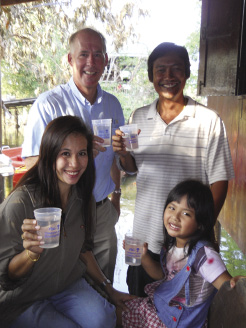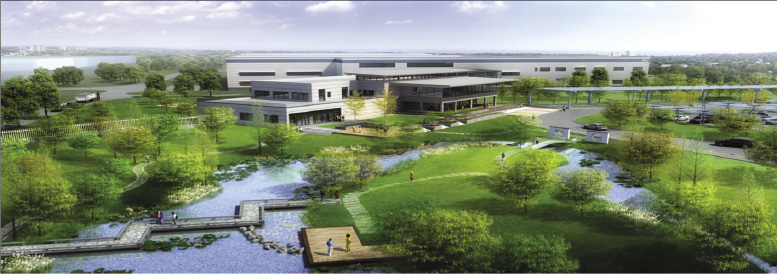- Home
- Media Kit
- Current Issue
- Past Issues
- Ad Specs-Submission
- Ad Print Settings
- Reprints (PDF)
- Photo Specifications (PDF)
- Contact Us

![]()
ONLINE
P&G’s Purpose
Editors’ Note
Bob McDonald served as a Captain in the U.S. Army for five years before joining Procter & Gamble in 1980. He began his first international assignment leading P&G’s laundry business in Canada in 1989. McDonald moved to Asia in 1991 and spent the next 10 years leading P&G’s businesses in the Philippines, Japan, and Northeast Asia. In 2001, he moved to Belgium to lead Global Fabric & Home Care, the company’s largest and most mature business. He returned to P&G’s Cincinnati headquarters in 2004 as Vice Chairman of Global Operations and was appointed Chief Operating Officer in 2007. McDonald was named President and Chief Executive Officer in 2009 and Chairman in 2010. He serves on the Board of Directors of Xerox Corporation and is Vice Chair of the US-China Business Council and member of the U.S. Advisory Committee for Trade Policy and Negotiations (ACTPN) and the Executive Committee of the Business Roundtable (BRT). McDonald graduated from West Point in 1975 with a Bachelor of Science in Engineering.
Company Brief
Employing approximately 129,000 people working in approximately 80 countries worldwide, Procter & Gamble (www.pg.com; P&G) has one of the strongest portfolios of trusted, quality, leadership brands, including Pampers®, Tide®, Always®, Pantene®, Bounty®, Dawn®, Pringles®, Downy®, Iams®, Crest®, Duracell®, Olay®, Gillette®, Braun®, and Fusion®.
Would you discuss the importance of corporate philanthropy and social responsibility to the culture of P&G?
For us, social responsibility is part of our DNA and can be traced back almost to the beginning of our 175 years in business. In 1887, we recognized our employees not only work at P&G, but they are P&G, so we introduced profit-sharing, giving everyone ownership and shared interests. When we launched “Tide” in 1946, we weren’t just creating a more efficient way to do laundry; we were giving women more time to spend with their families or to pursue their dreams. From providing disaster relief to creating employment opportunities for individuals living with disabilities, social responsibility is engrained in our culture. So naturally, it extends through our brands and all areas of our business.
As we look back at the past 175 years, we know that continuing to invest in social responsibility is crucial to creating the kind of company that will thrive for years to come.

P&G sharing its four
billionth liter of clean
drinking water in
Thailand after the floods
What was the vision behind P&G’s Live, Learn and Thrive program and what impact has it had?
We established Live, Learn and Thrive in 2005 to make a difference in the lives of children throughout the world. It delivered many life-changing experiences for children from providing them access to education to a first drink of clean water. This program served as the umbrella for our social responsibility work for a number of years and it was the banner under which P&G was able to improve life for more than 400 million children. Over time, however, we found that we could make an even greater difference for people in need by taking advantage of our unique core competencies and brand benefits, which are often more important than cash (not unique to P&G) to people who are unable to afford or access things like toilet paper, toothpaste, feminine care products, soap, and laundry and cleaning products.
In 2007, you set a goal to develop $50 billion in Sustainable Innovation Products (SIPs) over five years. Did you meet this goal and what are your plans to continue these efforts?
This year, we were pleased to announce that we hit $52 billion in cumulative sales of Sustainable Innovation Products – surpassing our 2013 goal by $2 billion. We accomplished this by focusing on making meaningful sustainability improvements on our biggest brands, such as Tide, Ariel, Pampers, Pantene, and Gillette. These improvements were made without asking consumers to accept trade-offs in either cost or performance.
This approach was critical to our strategy of meeting the needs of the vast majority of consumers, who – our research has shown – are not willing to accept trade-offs in order to purchase sustainable products. This approach also leveraged our scale and innovation capabilities and drove top-line sales, which is an important component of ensuring that environmental improvements are delivered in an economically sustainable way.

A rendering of the William McDonaugh-designed Taicang plant in China –
P&G’s most sustainable facility in the world to-date (above)
You set two additional ambitious social responsibility goals to accomplish by 2012, the first to help 300 million children around the world with programs that enable them to live, learn and thrive and the second to deliver four billion liters of clean water to prevent 160 million days of disease and save 20,000 lives. Would you highlight the success of these efforts?
In this year’s Sustainability Report, we announced that we had surpassed our goal of reaching 300 million children, helping improve life for over 400 million children around the world in just the past five years. This was accomplished through our social responsibility programs, which are focused on improving everyday life. For example, Pampers has partnered with UNICEF to eliminate Maternal and Neonatal Tetanus (MNT) by providing vaccines, which has protected over 100 million women and their babies from the deadly disease to date. Because of this work, six African countries have been validated by the World Health Organization as having eliminated MNT – Burkina Faso, Ghana, Guinea-Bissau, Liberia, Senegal, and Uganda.
A cornerstone of our social responsibility work is the life-saving technology we developed in collaboration with the Centers for Disease Control that makes even the dirtiest water clean enough to drink. This technology – P&G Purifier of Water – is the foundation for our Children’s Safe Drinking Water Program. To date, we have shared over five billion liters of clean drinking water, helping prevent more than 300,000 days of illness. We’re committed to scaling up this work even further to provide enough clean drinking water to Save One Life Every Hour by 2020.
How do you communicate your social responsibility efforts to employees and make sure that they are engaged in your programs?
Our employees are central to our social responsibility efforts and critical to our ability to make a positive difference in the communities where we live and work, as well as all over the world. Over the past two years, our employees have spent over 100,000 hours volunteering in their communities. Their time and effort is at the heart of our social responsibility efforts globally and it is because of their dedication that these programs thrive all over the world. For example, this year, almost 7,000 volunteers participated in projects to help further work done by the United Way. Employees not only give their time, but donate money to the organization. In Latin America, where many United Way Programs thrive, 65 percent of employees have set up payroll deductions to donate to the United Way, and each donation made by an employee is matched by P&G dollar for dollar.•